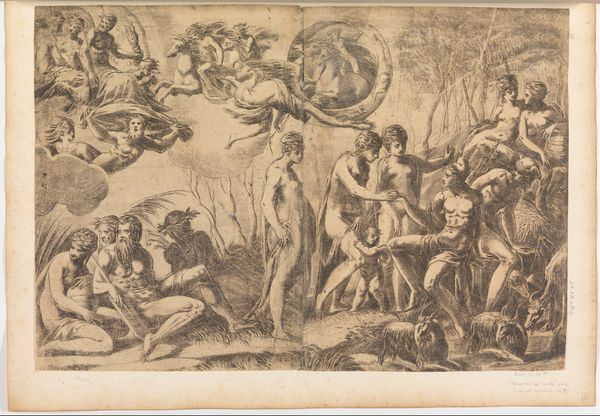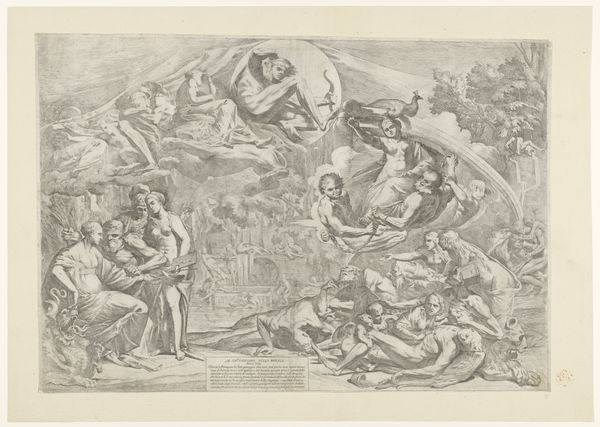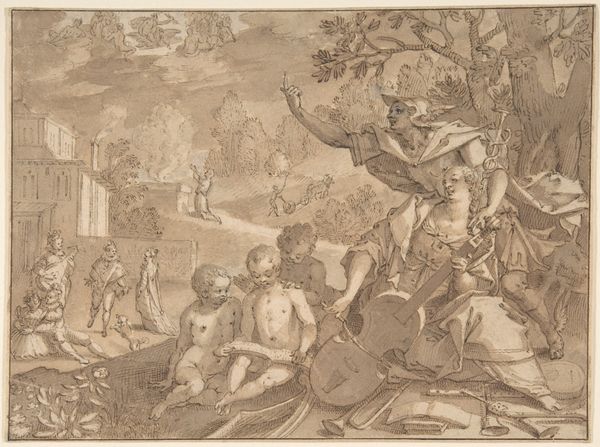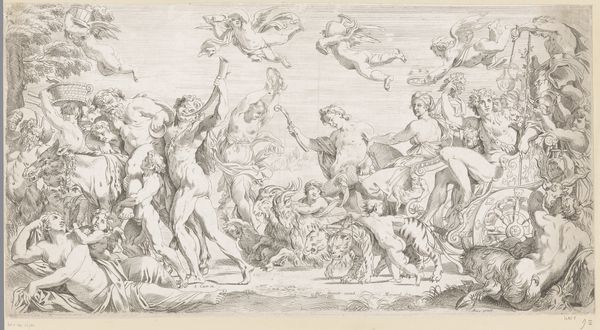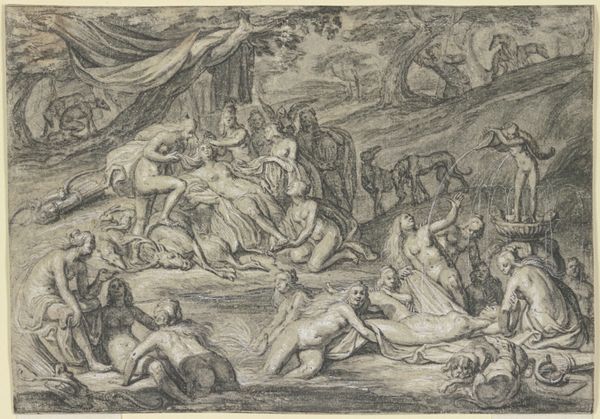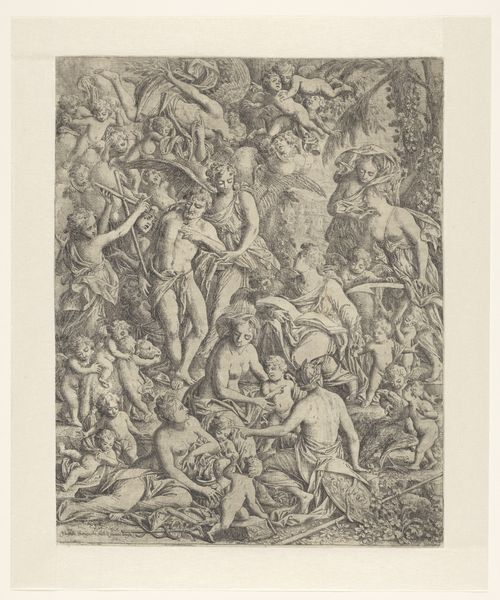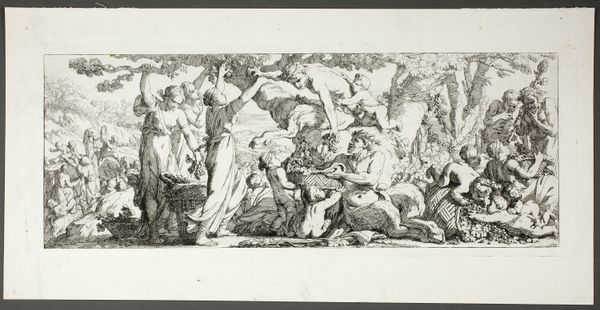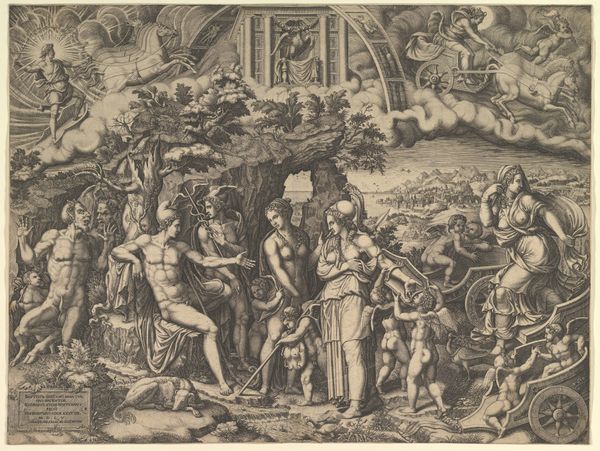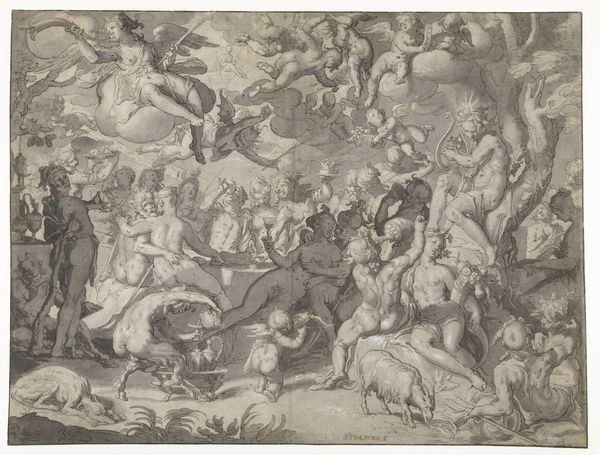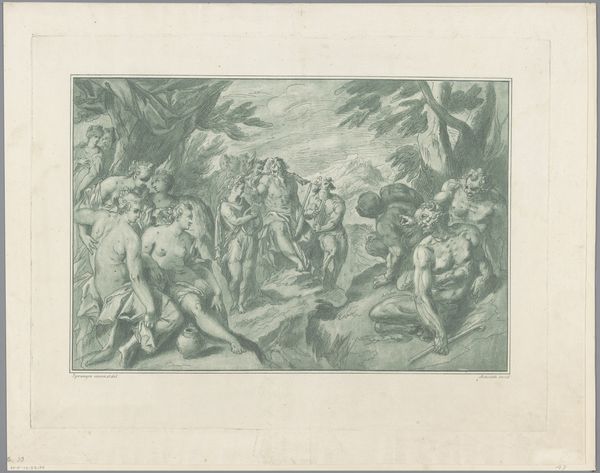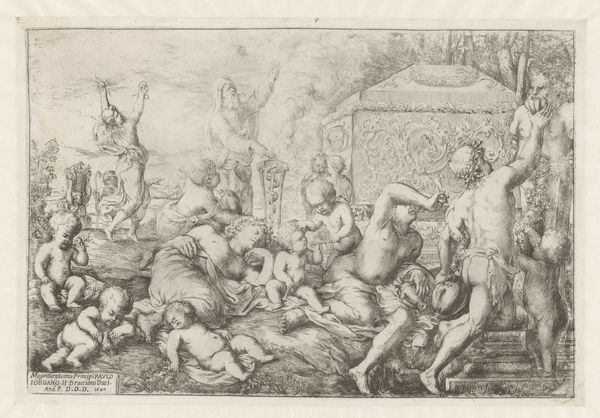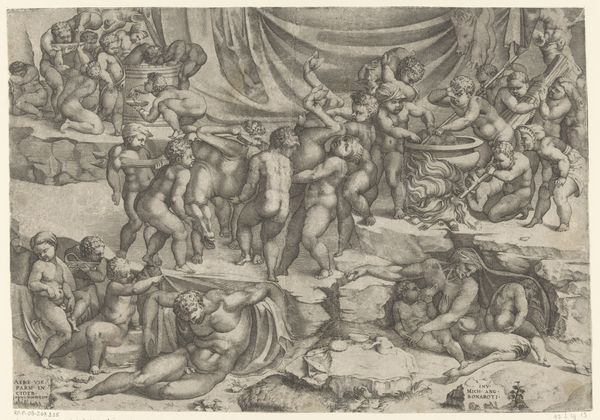
drawing, engraving
#
pencil drawn
#
drawing
#
allegory
#
baroque
#
figuration
#
pencil drawing
#
italian-renaissance
#
engraving
Dimensions: height 393 mm, width 529 mm
Copyright: Rijks Museum: Open Domain
Curator: This engraving, "Young Man with Bust of Minerva and Dancing Satyrs," comes to us from Pietro Testa, sometime between 1645 and 1650. It resides here at the Rijksmuseum. Editor: My first thought? Chaos! An orchestrated chaos, perhaps. There’s a whole lot going on and the light touch with the engraving lends a certain ethereality to the debauchery. Curator: That's it precisely, that tension between intellect and revelry. Testa's working with an allegory here. Minerva, wisdom, stands coolly by, while the satyrs give in to sheer bacchanalian glee. Look at the figures and the methods—engraving capturing a sketch-like spontaneity, almost as if we are seeing these conflicting impulses battle it out in the artist’s own mind. Editor: It's about labor, too, isn't it? I’m wondering how long this would have taken to create, given the tools available. All those tiny, etched lines. The image teems, but how exhausting. How much of the final piece would depend on the plate he was using? And it really highlights the stark differences between Minerva’s serene, sculpted existence and the physical exertion on display here! Curator: A fascinating contrast. Do you see that tablet the young man holds? It’s inscribed "ALTRO DILETTO CHE IMPARAR NON TROVO" — "I find no other delight than learning." It adds to this idea of intellectual pursuit versus sheer, unbridled physical impulse. The satyrs' frenzy almost makes that pursuit seem… well, kind of sad. Editor: Or futile, maybe. I mean, the sheer energy expended by these bodies makes the cerebral efforts almost look, you know, a little tragic. But all that exertion raises material questions about classical and renaissance production—to consider the sheer labor power and materials necessary to uphold what Minerva represents. How do we, now, account for the human cost in art and craft practices of the past and present? Curator: Precisely. There's a dialogue across time itself embedded in the print, inviting viewers to consider what they truly value. It reminds me of an eternal tightrope walk, between controlling intellect and wild freedom, each influencing the other. Editor: So much more going on than meets the eye at first glance. Testa clearly invites us to consider the messy and complex relationships between thought, process, and labor.
Comments
No comments
Be the first to comment and join the conversation on the ultimate creative platform.
